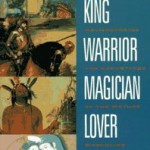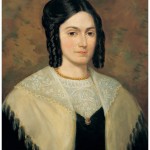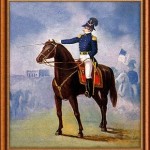 In their 1990 publication, King, Warrior, Magician, Lover: Rediscovering the Archetypes of the Mature Masculine, Robert Moore and Douglas Gillette suggested during the apex of the “men’s movement” that males should listen to the wisdom of the ages in searching for mature expressions of modern masculinity, in particular, to the roles suggested by myth and legend listed in the title of their book. According to Moore and Gillette, these four archetypes are at once vital sources of positive energy for aware men to capture and channel in order to bless the lives of others, as well as potentially dangerous sources of negative energy that can possess the unaware men who assume them and lead them to destruction.
In their 1990 publication, King, Warrior, Magician, Lover: Rediscovering the Archetypes of the Mature Masculine, Robert Moore and Douglas Gillette suggested during the apex of the “men’s movement” that males should listen to the wisdom of the ages in searching for mature expressions of modern masculinity, in particular, to the roles suggested by myth and legend listed in the title of their book. According to Moore and Gillette, these four archetypes are at once vital sources of positive energy for aware men to capture and channel in order to bless the lives of others, as well as potentially dangerous sources of negative energy that can possess the unaware men who assume them and lead them to destruction.
Moore and Gillette defined their mature masculine archetypes as follows: (i) the King represents the energy of a just and creative ordering, (ii) the Warrior represents the energy of self-disciplined, aggressive action, (iii) the Magician represents the energy of initiation and transformation, and (iv) the Lover represents the energy that connects men to others and the world. The shadow images of these mature archetypes, the dangerously destructive, negative energies that can overwhelm males, are identified by Moore and Gillette as (i) the Divine Child, (ii) the Hero, (iii) the Precocious Child, and (iv) Oedipal Child. According to the authors: “the developmental history of every man is, in large part, the story of his failure or success at discovering within himself the archetypes of mature masculinity.”
I invite you to consider the potential explanatory power of these archetypes for the continued attraction of the figure of Joseph Smith, especially in light of the findings of the New Mormon History of the last 50 years. Smith channeled these archetypes in many ways, both in his personal life and in his projected mythos. Whether he embodied them in a positive or negative manner–or both–is left to your interpretation and comment. All of Joseph’s life experiences with these archetypes are documented in Richard Bushman’s biography of the Mormon Prophet, Joseph Smith: Rough Stone Rolling, among other sources.
King. Smith was annointed a king by a group known as “The Council of Fifty,” an organization established circa 1844 in Nauvoo, Illinois, to function as a kind of shadow theocratic government until the 2nd coming of Jesus when the “Kingdom of God” would be officially established on the earth. Even if Joseph’s coronation as a king was intended to be ritually symbolic, Smith’s ambitions to lead and guide others while creating a just “Zion” society is clearly evident in other positions held by him in Nauvoo: mayor, militia general, municipal judge and, of course, LDS church president. Finally, in that peculiarly American combination of kingly ambitions, Joseph Smith also ran for President of the United States in 1844, his quixotic campaign cut short by his assassination in the summer of that year.
Warrior. Smith was associated with the sword of Laban, a Nephite relic buried with the golden plates from which Smith produced the Book of Mormon, the sword being prominently featured in an early beheading narrative in that text. Later, Joseph Smith led a paramilitary expedition of Mormons from Ohio to Missouri circa 1834 in an unsuccessful attempt to regain land from which the Latter-day Saints had been expelled by non-Mormons. In the Nauvoo period, Smith was appointed Lieutenant General of the Nauvoo Legion. Before he died, it was reported by numerous sources that, determined to protect his people from their enemies, he: “straightened himself up in a very erect and bold position and drew his sword out of its scabbard and presenting it before him said, ‘The sword is unsheathed and shall never return to its sheath again until all those who reject the truth and fight against the kingdom of God are swept from the face of the earth.'”
Magician. Smith’s involvement with folk magical practices of the 19th Century are well-known. During the period before the production of the Book of Mormon, Joseph was a popular local seer who was thought to be able to find lost objects or hidden Indian treasure. His use of a seer stone placed in a hat to find treasure and lost object appears to have been the same method he used to translate the text of the golden plates, demonstrating a close connection between these activities. As the LDS church president, he also healed others, uttered prophecies and inspired thousands, among other feats, miracles that are akin to magic, if not indistinguishable from it during his own day.
 Lover. Joseph’s love for his wife Emma is legendary among his followers today, Brigham Young having remarked that Joseph used to say that he would be with Emma in the hereafter, even if he had to go to hell to get her, which is where Young expected Smith to find her. Joseph’s love for additional women is more legendary among his detractors, however, who note the overwhelming evidence for Joseph Smith being the polygamous husband to an unknown number (34?) of women in Nauvoo, Illinois, and the founder, albeit in secret, of the Mormon polygamous practices of later pioneer Utah. Joseph’s love for his people and all of humankind, in the broader context of this archetype, is further demonstrated by his religious doctrines preoccupied with binding the hearts of parents to their children through vicarious rituals intended to seal all peoples in the history of our planet together into eternal families.
Lover. Joseph’s love for his wife Emma is legendary among his followers today, Brigham Young having remarked that Joseph used to say that he would be with Emma in the hereafter, even if he had to go to hell to get her, which is where Young expected Smith to find her. Joseph’s love for additional women is more legendary among his detractors, however, who note the overwhelming evidence for Joseph Smith being the polygamous husband to an unknown number (34?) of women in Nauvoo, Illinois, and the founder, albeit in secret, of the Mormon polygamous practices of later pioneer Utah. Joseph’s love for his people and all of humankind, in the broader context of this archetype, is further demonstrated by his religious doctrines preoccupied with binding the hearts of parents to their children through vicarious rituals intended to seal all peoples in the history of our planet together into eternal families.
What do you think, are male archetype useful to guide men toward maturity, or are they merely barbaric relics of our patriarchal past (and present) that are not peculiar to men at all? Do they suggest additional ways of understanding the charisma of Mormon founder Joseph Smith, as well as some of his weaknesses?



What an interesting thought exercise!
I feel through more recent publishings of Joseph Smith, I’ve related to him so much more as a multi-dimensional person than I ever did as the white-washed Prophet Joseph I was taught about at church. While I’ve come to appreciate, relate to, and love Joseph’s humanity, I fail to see him as a legitimate modern-day prophet of any kind, fallible or not. For me, the key lies in exactly what you wrote about in the first paragraph – awareness. I seriously doubt that Joseph had much awareness about who he was and why he was living the way he did. I think he lived at the whim of his unchecked mind.
Laurie, thanks for your thoughts. Joseph unDisneyized turns out to be a much more sympathetic human being I agree. There’s one statement Joseph made at he end of his life that strikes me as an awareness moment, the one Fawn Brodie used as a title to her bio, where he says, almost incredulously, that no man knows his history and he would not have believed it had he not experienced it himself.
I like the authors’ idea that “these four archetypes are at once vital sources of positive energy for aware men to capture and channel in order to bless the lives of others, as well as potentially dangerous sources of negative energy…”
I think we can definitely see this in the life of Joseph Smith. While he remains an enigma in many ways, I disagree with Laurie’s assessment that he “lived at the whim of his unchecked mind.” I think to this day his motivations remain unclear to many of us.
In the OP you mentioned that “whether [Joseph] embodied [these archetypes] in a positive or negative manner–or both–is left to your interpretation and comment.” It’s fascinating to me how differently this is interpreted — as evidenced by the comments on my facebook page when I linked to this post!
Archetypes can be amazingly useful to men as they mature. The four that are mentioned in the OP give men who are aging alternatives to the “hero” archetype of a more youthful stage. I think it would be useful for maturing men to investigate these ideas.
BiV, you are so right. I read KWML when I was 30, and I thought about it more as an aspirational paradigm, but it was so ephemeral to me at that young age. Now that I’m 50, these archetypes are real anchors in my life that keep me from drifting away on a mid-life crisis.
Here’s something I’ve just recently realized. In my 20s-30s, while I knew the character of James Bond (at least in the movies) was stuck in a shadow phase of the “Lover”, he was still very appealing because I thought he was attractive women. Although I still like to watch Bond movies, they now seem infantile in their preoccupations. The character of Atticus Finch (recently discussed here on D&S), now motivates me much more and he’s someone I want to be, a refuge for others, a source of strength, characteristics that I’ve discovered are very attractive to women (ie, my wife), but it’s not something I could have realized in my 20s and 30s.
And, yes, your FB link has some fascinating discussions about these ideas–thanks for posting it.
I would have love to see more development of the idea of why and how the four archetypes are necessarily aspects of the unconscious male. I suppose that since unconsciousness is to date the dominant mode of living, it’s maybe trivial to make the assertion.
I wonder if Joseph ever really harnessed the power of stopping. I wonder if that mind of his often stood still.